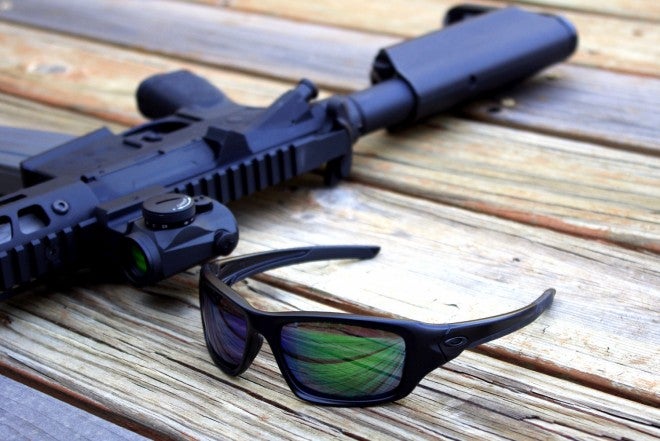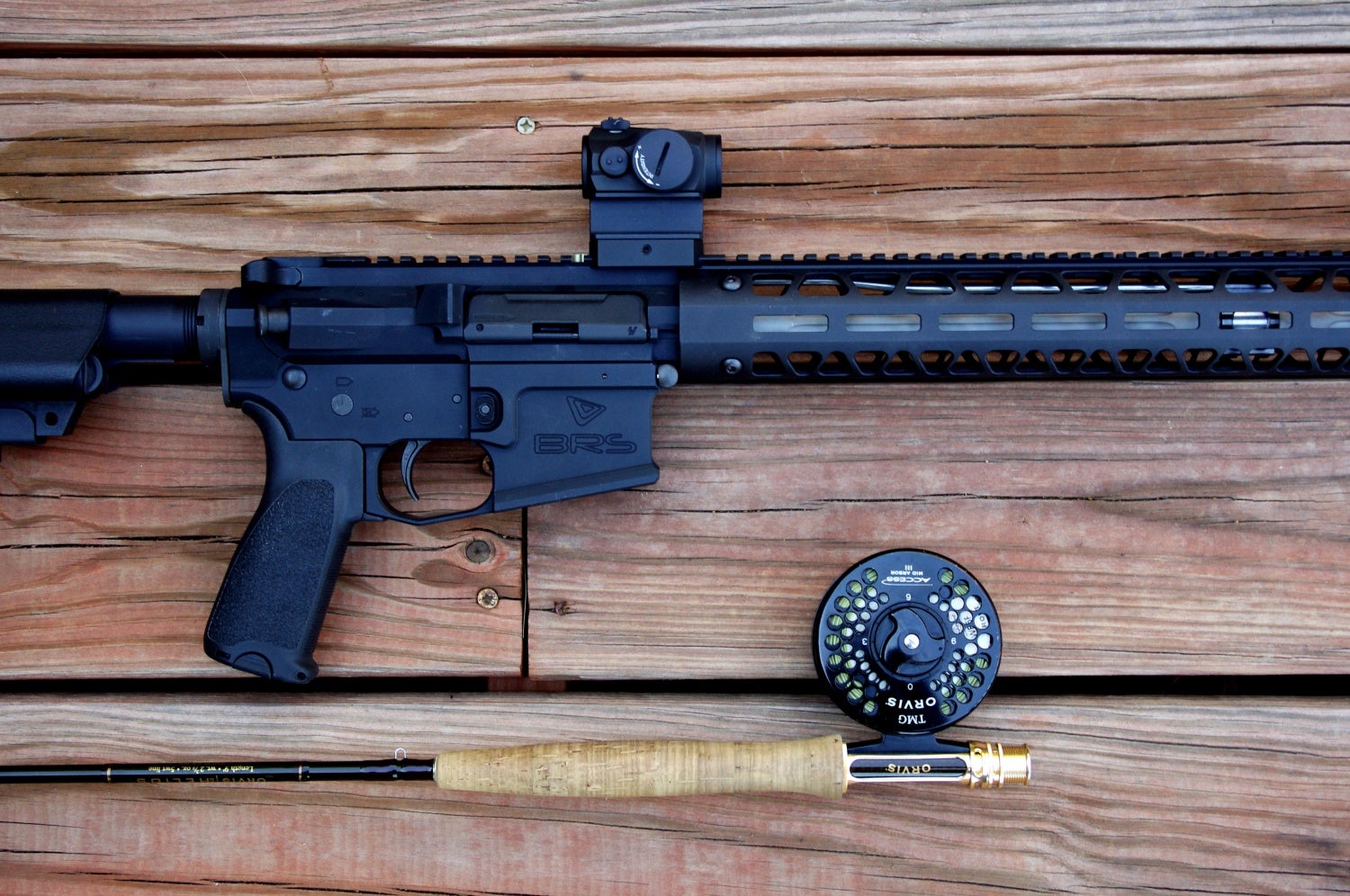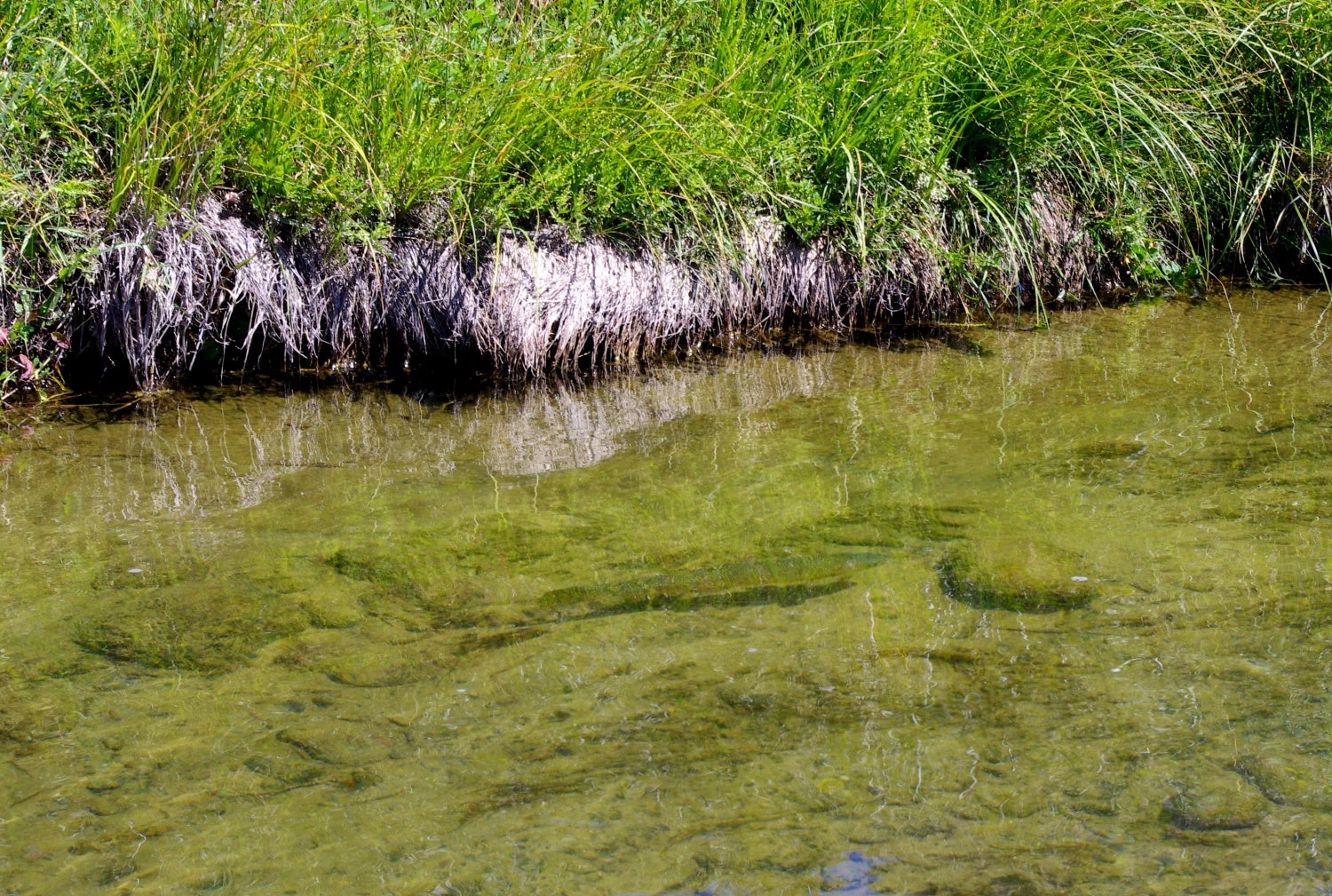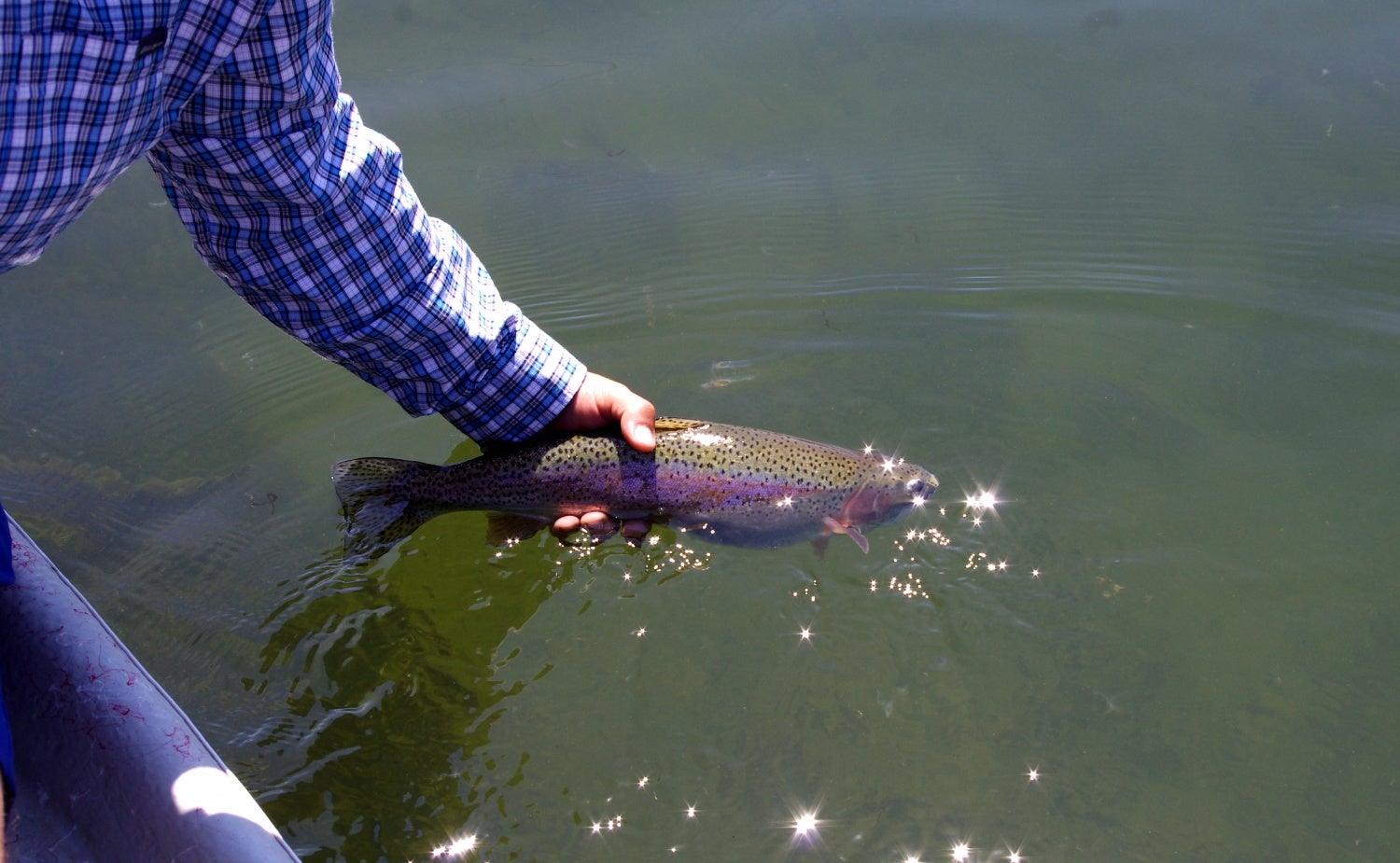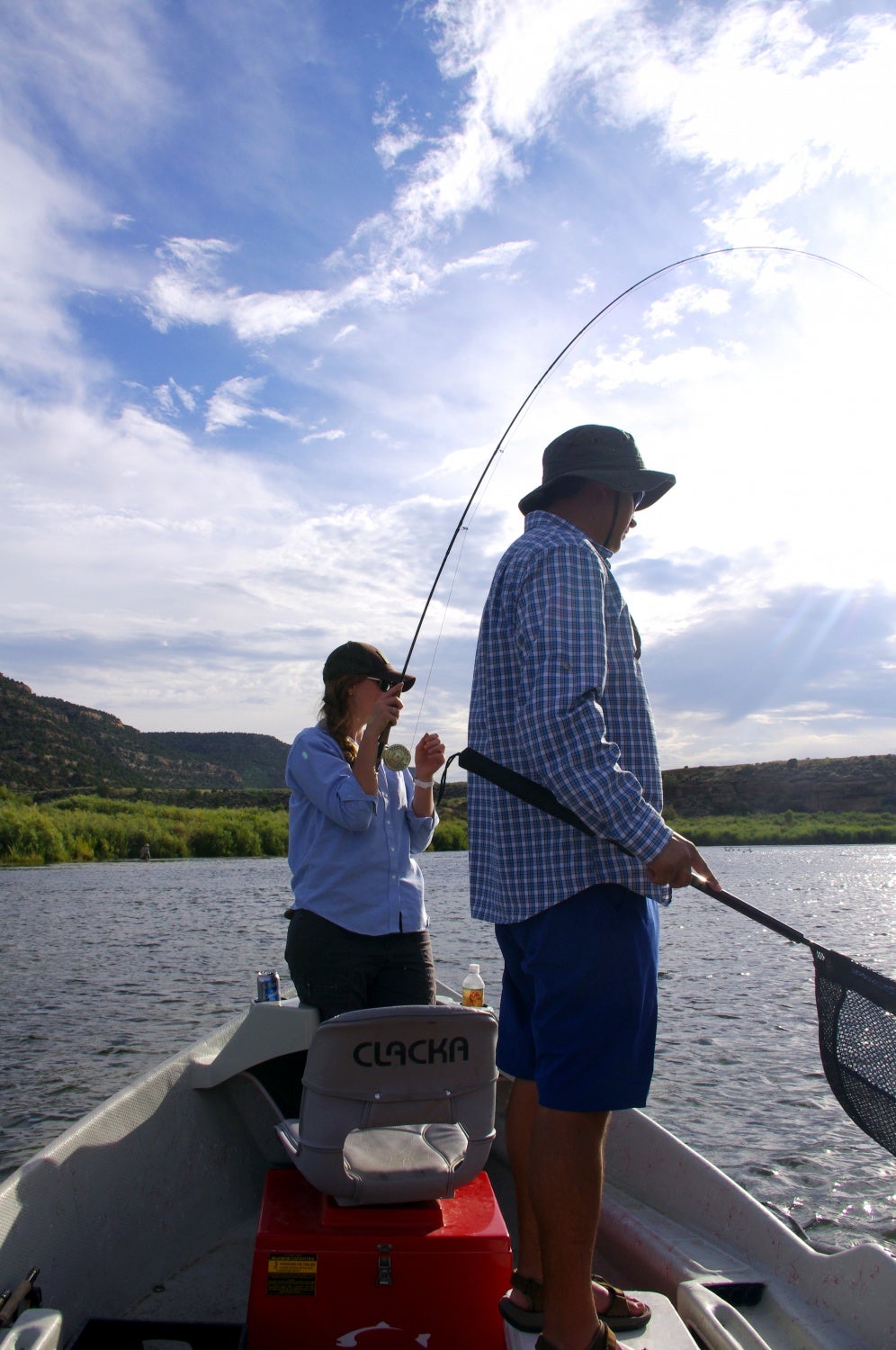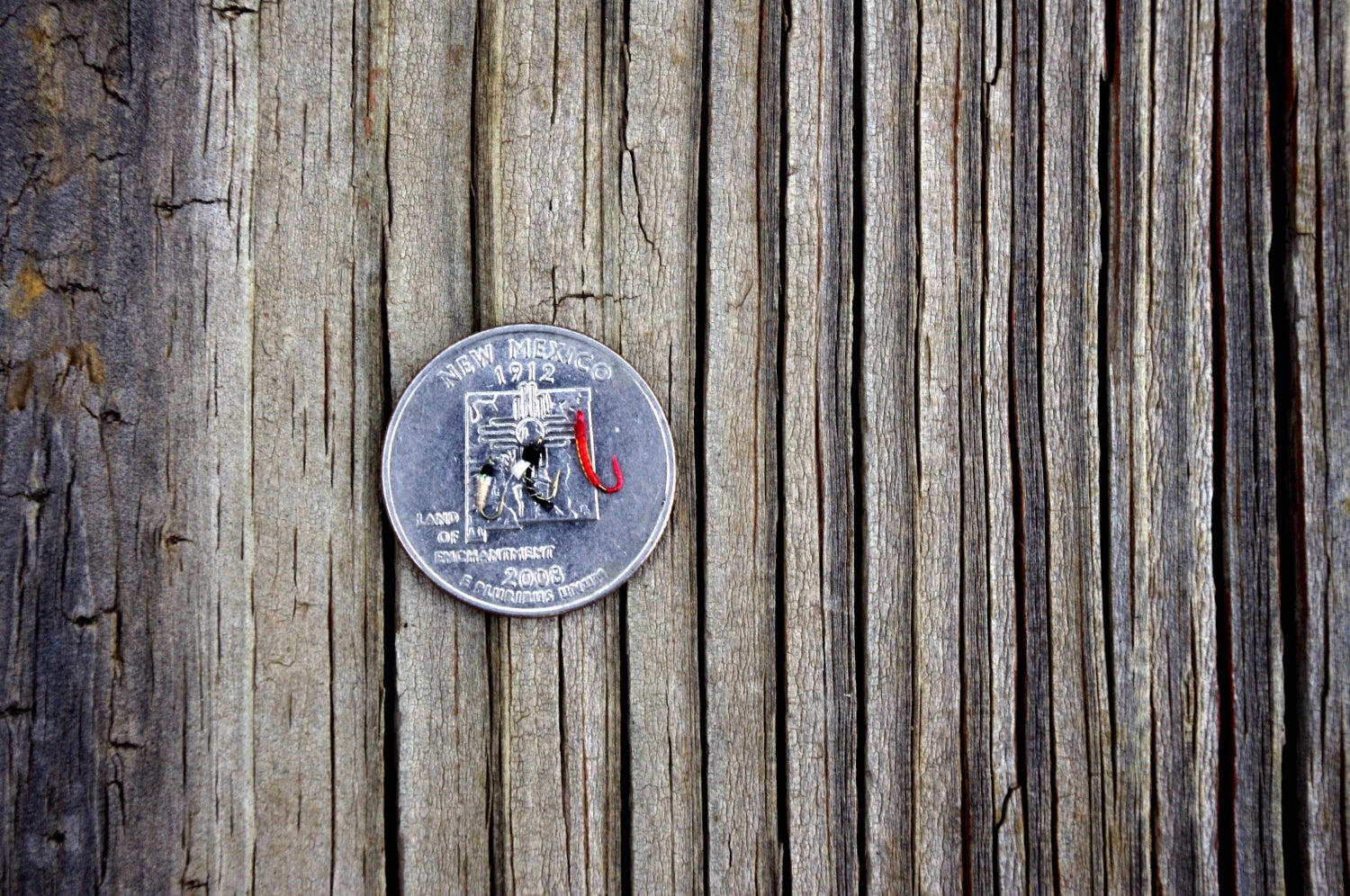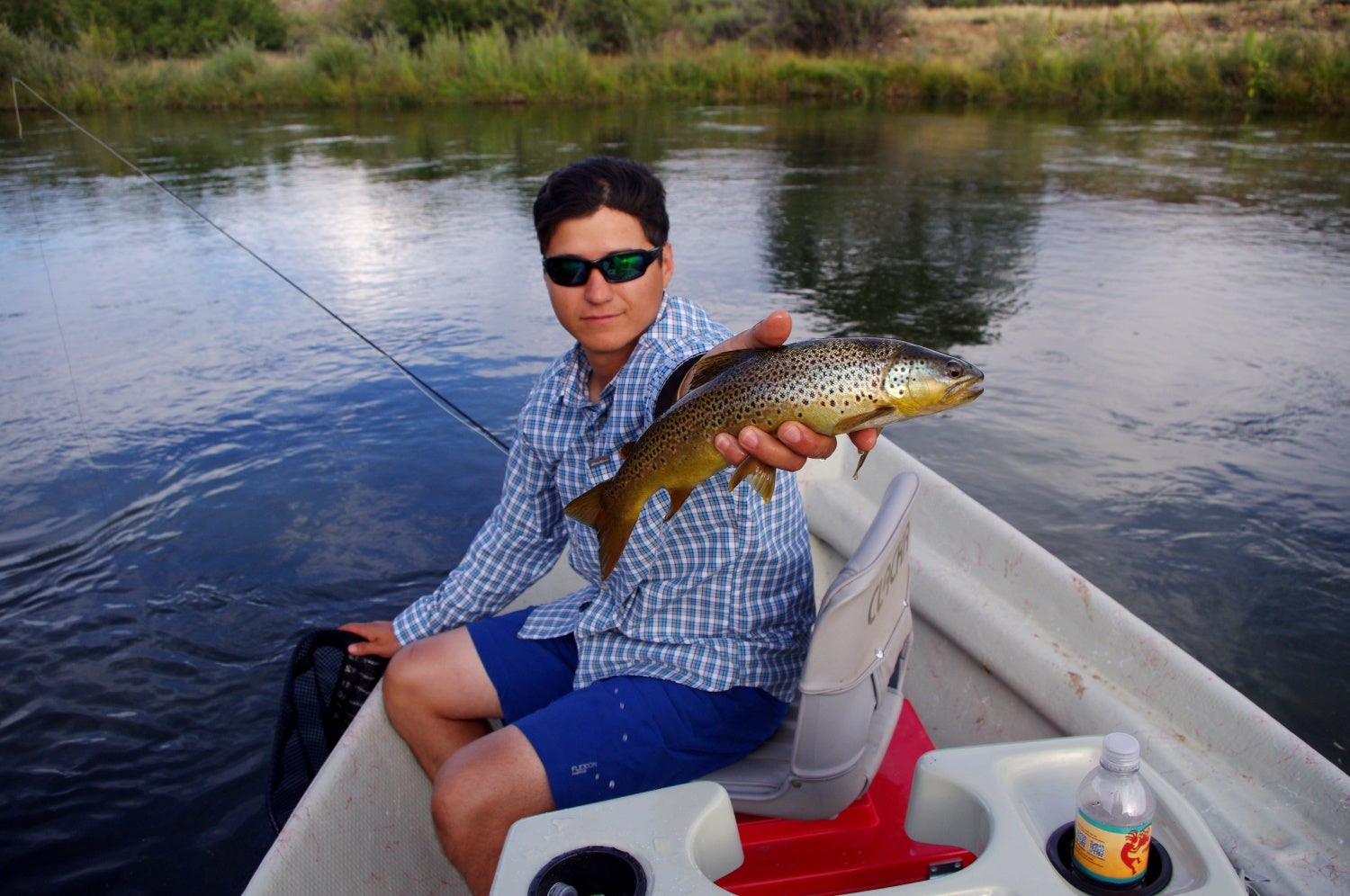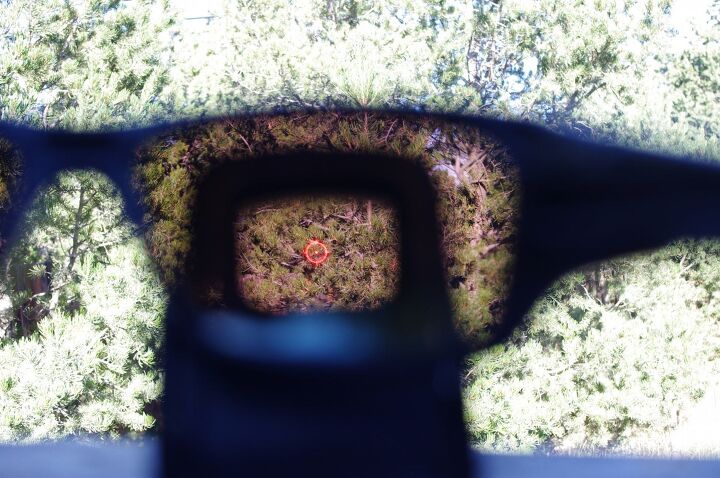The only outdoor activity that I enjoy more than hunting is fly fishing. Several weeks ago I was sitting at my computer thinking about how I needed a new pair of polarized sunglasses for an upcoming fly fishing trip to the San Juan River, in north western New Mexico. Not more than a minute after having that thought my Gmail inbox showed one new email from my editor, Phil White. Phil had sent out an email to the writers asking us if we were interested in testing Oakley’s new PRIZM MARITIME sunglasses. “What amazing timing you have, Phil!” I thought. I quickly responded that I could test them, and was sent a pair of the Oakley PRIZM MARITIME Polarized SI Valve sunglasses. The SI Valve glasses feature Oakley’s new PRIZM MARITIME lens. If you are serious about fly fishing, it is absolutely necessary that you use glasses with polarized lenses. Polarized lenses reduce glare off water, allowing a fisherman to gauge water depth and spot fish in the water.
Key Features of the Oakley PRIZM MARITIME SI Valve sunglasses include (Please bear with me. The guys and gals in Oakley’s marketing department had a great time naming the hardware found on these sunglasses. These specifications are from Oakley’s website.)
- Prizm™ Maritime SI Prizm™ Maritime Polarized reduces glare, increases contrast and clarity allowing the user to better navigate and see through the water.
- Plutonite® Lens One of the most optically pure materials used in eyewear today, it maximizes clarity and impact resistance while filtering out 100% of all UVA, UVB, UVC and harmful blue light up to 400nm. Not a coating, the UV protection is from the lens material itself.
- High Definition Optics® High Definition Optics® (HDO®) is a collection of patented technologies that allow Oakley eyewear to meet or exceed the testing standards of the American National Standards Institute for optical clarity, visual fidelity, and impact resistance.
- Impact Protection Backed by decades of innovation, Oakley performance eyewear offers uncompromising protection against high-velocity and high-mass impact. The protection is a benefit of the premium materials and unique architectures of Oakley lens/frame combinations.
- UV Protection Eye damage attributed to ultraviolet light includes cataracts, pterygium and macular degeneration. Our Plutonite® lens material filters out 100% of all UVA, UVB, UVC and harmful blue light up to 400nm. The protection is from the lens material itself.
- Three-Point Fit A patented innovation that ensures the frame makes contact only at the bridge of the nose and the sides of the head. It holds lenses in precise optical alignment with a secure fit that eliminates the pressure points common with frames that hook the ears.
- O-Matter™ A stress-resistant frame material that withstands environmental extremes, it is lightweight yet highly durable. Controlled flexibility enhances impact resistance while contributing to the all-day comfort of frames made with this innovative synthetic.
- Oakley HDPolarized® Improving safety, comfort and performance, Oakley HDPolarized lenses filter out 99% of reflected glare without the haze and optical distortion that can come with polarized lenses made with conventional manufacturing techniques.
- Unobtainium® A soft hydrophilic synthetic, it increases adhesion when wet to grip better when you perspire. This makes it ideal for earsocks and nose pads in performance eyewear.
I have been a longtime fan of Oakley sunglasses. I bought my first pair in 2002. Whether I am doing farm work, shooting, hunting, gunsmithing, mechanical chores, or cleaning up dead trees on my wooded property, I have complete confidence that my Oakley sunglasses will protect my eyes from debris and UV radiation. My current pair of Oakley’s is the black Gascans. Typically I fly fish with Ray Bans and Costa Del Mars, so I was very excited to try out a pair of polarized glasses from Oakley.
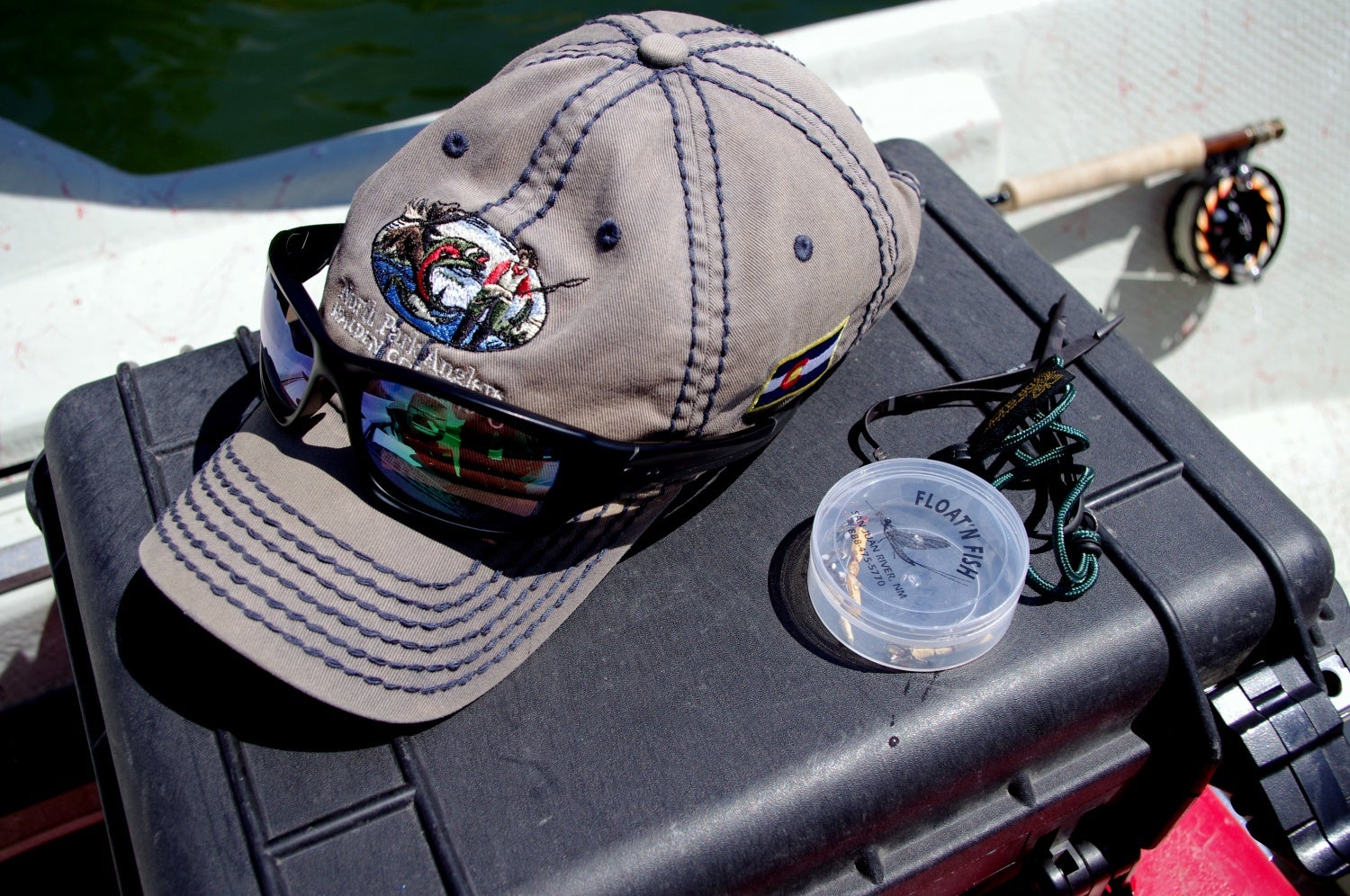
Oakley PRIZM MARITIME SI Valve sunglasses and my North Park Anglers fishing cap. I got this cap when I was in Walden Colorado. I tend to not be a superstitious person but I have caught some giant trout while wearing this ball cap. If you find yourself in the North Park area of Colorado and you want to do some fly fishing, contact North Park Anglers and ask for Royce Olney. Great guy, amazing fisherman.
Maritime testing was done at the San Juan River in Navajo Dam, New Mexico. The San Juan River starts at the Navajo Reservoir in New Mexico and flows 383 miles into the Colorado River. On its way to the Colorado, the San Juan River will flow through New Mexico, Colorado, and Utah. The headwaters of the San Juan River are a world class trout fishery. A recent report on the San Juan River boasted a remarkable 80,000 trout in the first 4.25 miles, with an average length of 17 inches. The first 3.5 miles of the river below Navajo Dam are managed as “Special Trout Water.” All fish caught in this 3.5 mile stretch must be released immediately, and you can only fish with artificial lures that have a single barbless hook. Abundant bug life, constant ice cold 45 degree water coming from Navajo Reservoir, strict regulations, and good management all make the San Juan River a very special place to fly fish. On this trip to the San Juan, I was joined both by my lovely girlfriend and by my friend, Ethan Baca. Ethan is a world class fly fishing and hunting guide. His guiding experience ranges across North America, and includes guiding on the San Juan River in New Mexico, the Gunnison in Colorado, the Kenai River in Alaska, and work as a hunting guide at the Lodge at Chama in Chama, New Mexico.

The Texas Hole on the San Juan River. The latest studies have shown that there are over 20,000 trout per mile in the first 4.35 miles of the San Juan River. It’s amazing that such a fishery exists in the high deserts of New Mexico.
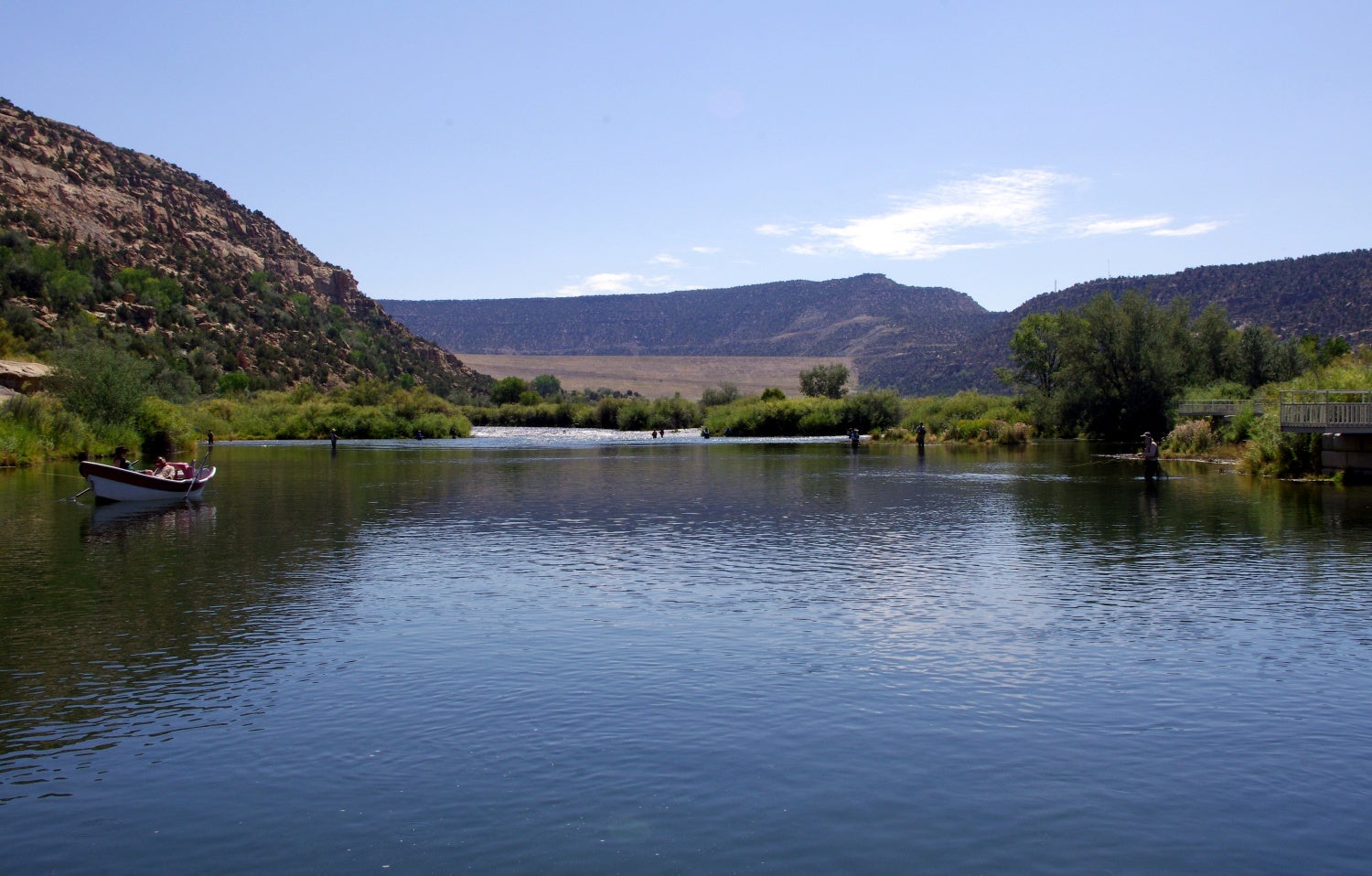
In the distance you can see Navajo Dam. If you plan on floating the San Juan River, the Texas hole is where you would launch your boat.
The Girlfriend, Ethan, and I planned on floating several miles of the Quality water. We started at the Texas Hole and took out at the Crusher Hole day use area. The watercraft used for our float was the ClackaCraft Eddy drift boat. For testing, Oakley was kind enough to send a pair of glasses to both Ethan and me. I started the morning with my polarized Ray Bans and wore them as we set up our rods. After about 20 minutes on the water with the Ray Bans, I switched to the Oakley PRIZM MARITIME SI Valve sunglasses. I was simply amazed at how clear the water became. I could clearly see to a depth of about 6-8 feet. I was able to see trout in the water with greater clarity then through the other polarized glasses I brought with me. Being able to identify the depth at which the trout were feeding allowed us to dial in our strike indicators and spot-fish for the trout. Spot-fishing is when you pick a fish that you want to catch and cast about 10 feet up stream from its position. When spot fishing you can study the fish to see if it is interested in your fly and literally set the hook the moment the fish bites the lure. This can only be accomplished with a good polarized lens.
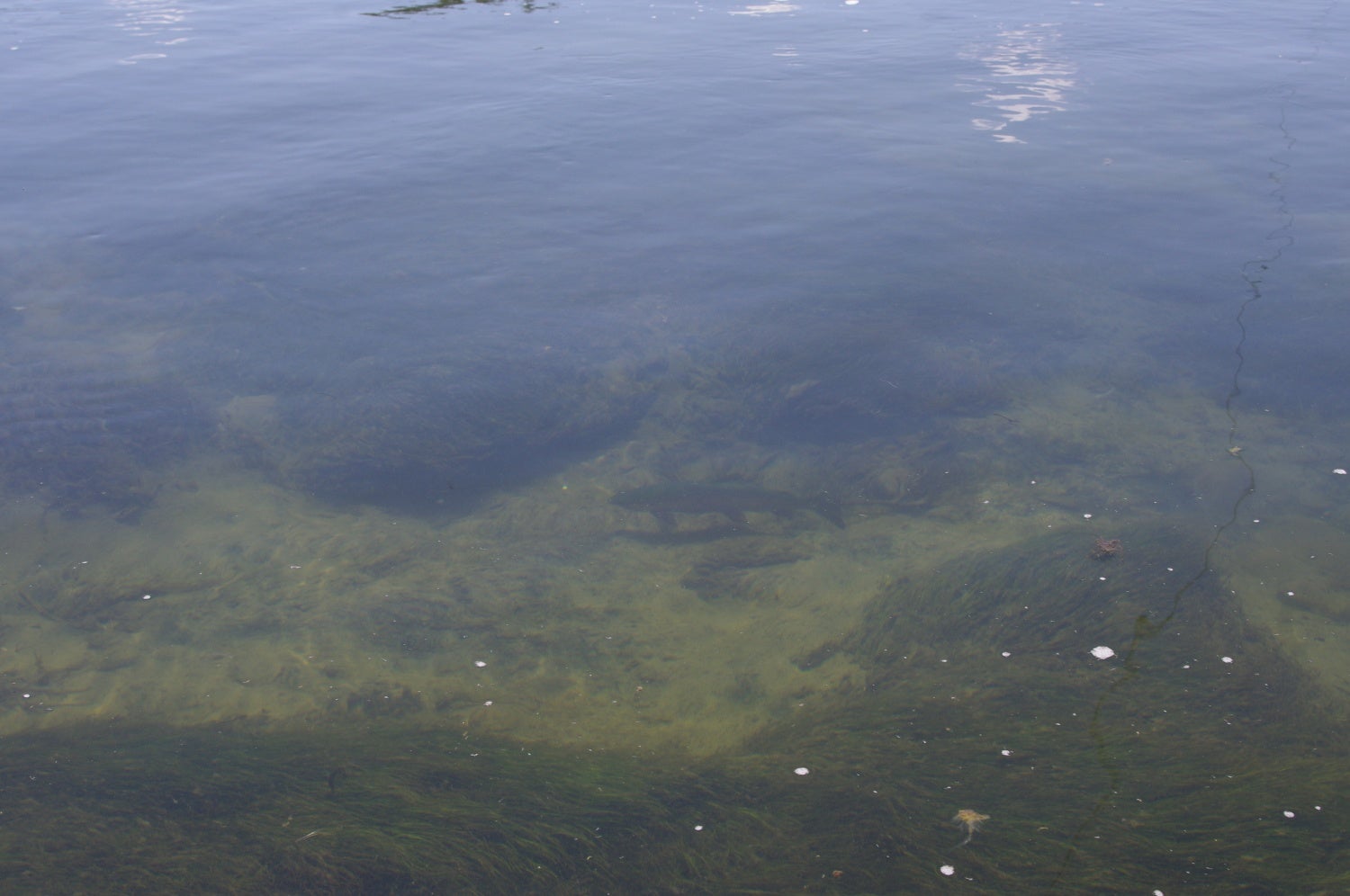
This rainbow trout is at least 20 inches. It is holding in about 4 feet of water. Below is a SIMULATED picture of what that fished looked like wearing the Oakley PRIZM MARITIME sunglasses.
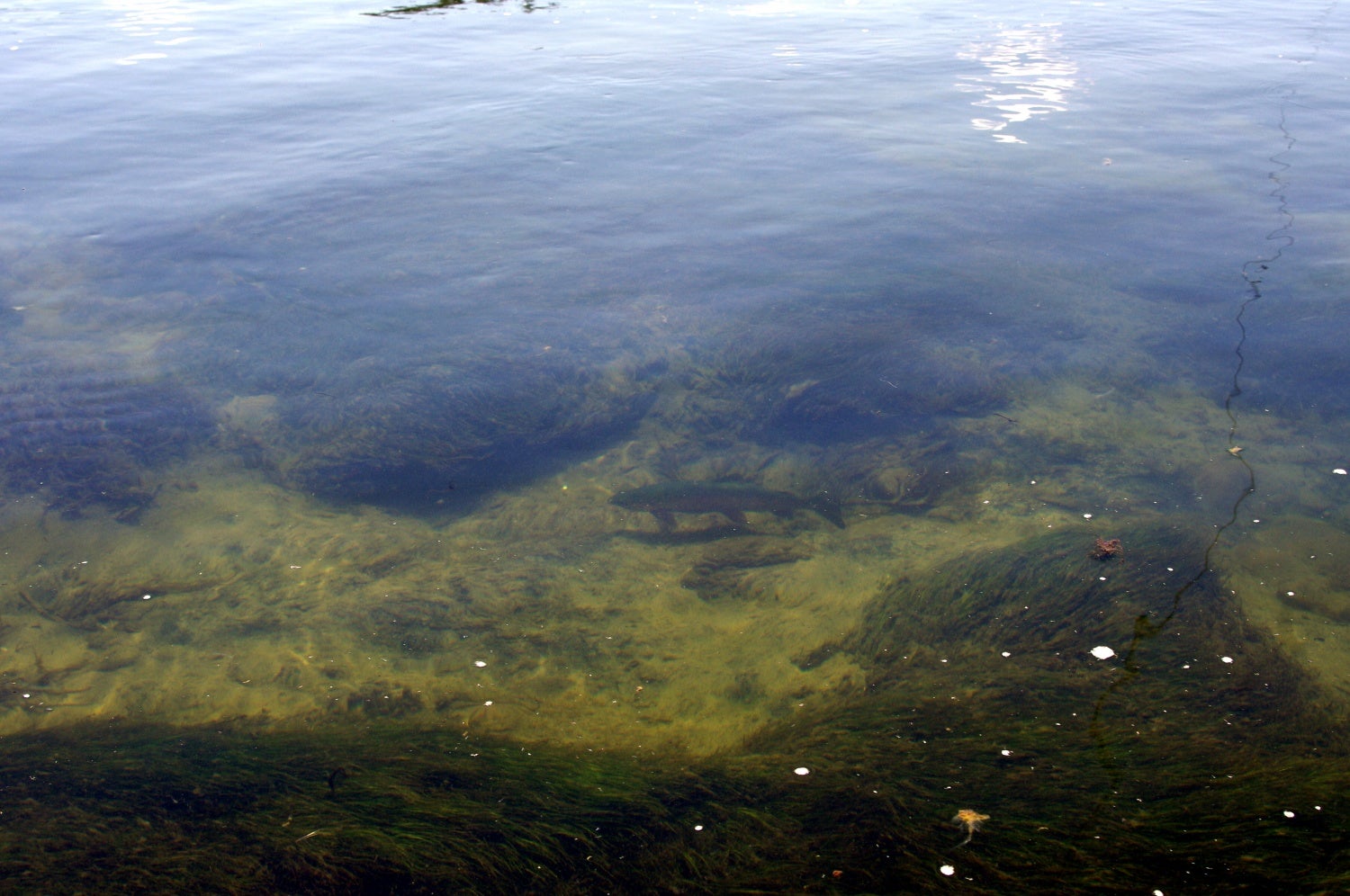
This is what that fished looked like through the Oakley PRIZM MARITIME sunglasses. Please note this is a simulation. I did some fancy photo editing to clarify the water and remove the glare.
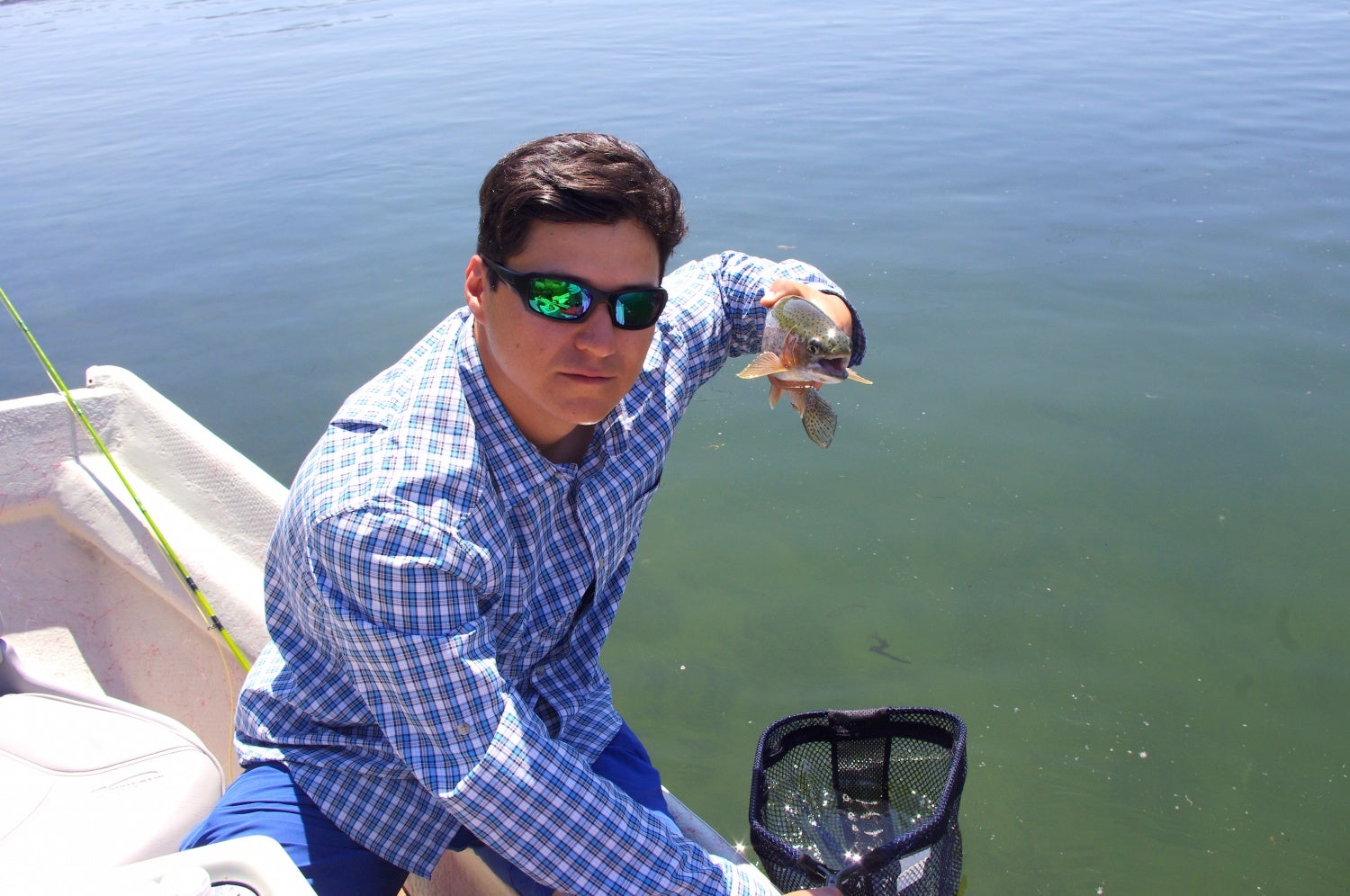
Ethan Baca with the first fish of the day. Ethan is a world class hunting and fishing guide. Ethan was also provided a pair Oakley PRIZM MARITIME sunglasses for testing.
Because the Polarization was so good on the Oakley PRIZM MARITIME SI Valve sunglasses, we were able to see at what depth the fish were feeding, adjust our strike indicators (fly fishing speak for bobber) to detect the subtle “strikes,” and watch the trout react to the flies that we were casting to them. The trout on the San Juan do not spook easily, but they are extremely picky about what they eat. Besides having excellent vision, the trout on the San Juan will gently maw their food before swallowing it. This is important because if the strike indicator is not positioned correctly the fish will maw the fly and spit it out before a fisherman can set the hook, or even know that there was a strike. Watching the fish react to our flies allowed us to quickly adjust our presentations, and we were catching fish almost immediately.

While floating through the Lower Flats I saw a very large trout in the water. I cast to it, saw it adjust in the water to intercept my fly and set the hook right as it nibbled on the fly. This style of fishing would be impossible without quality polarized sunglasses.
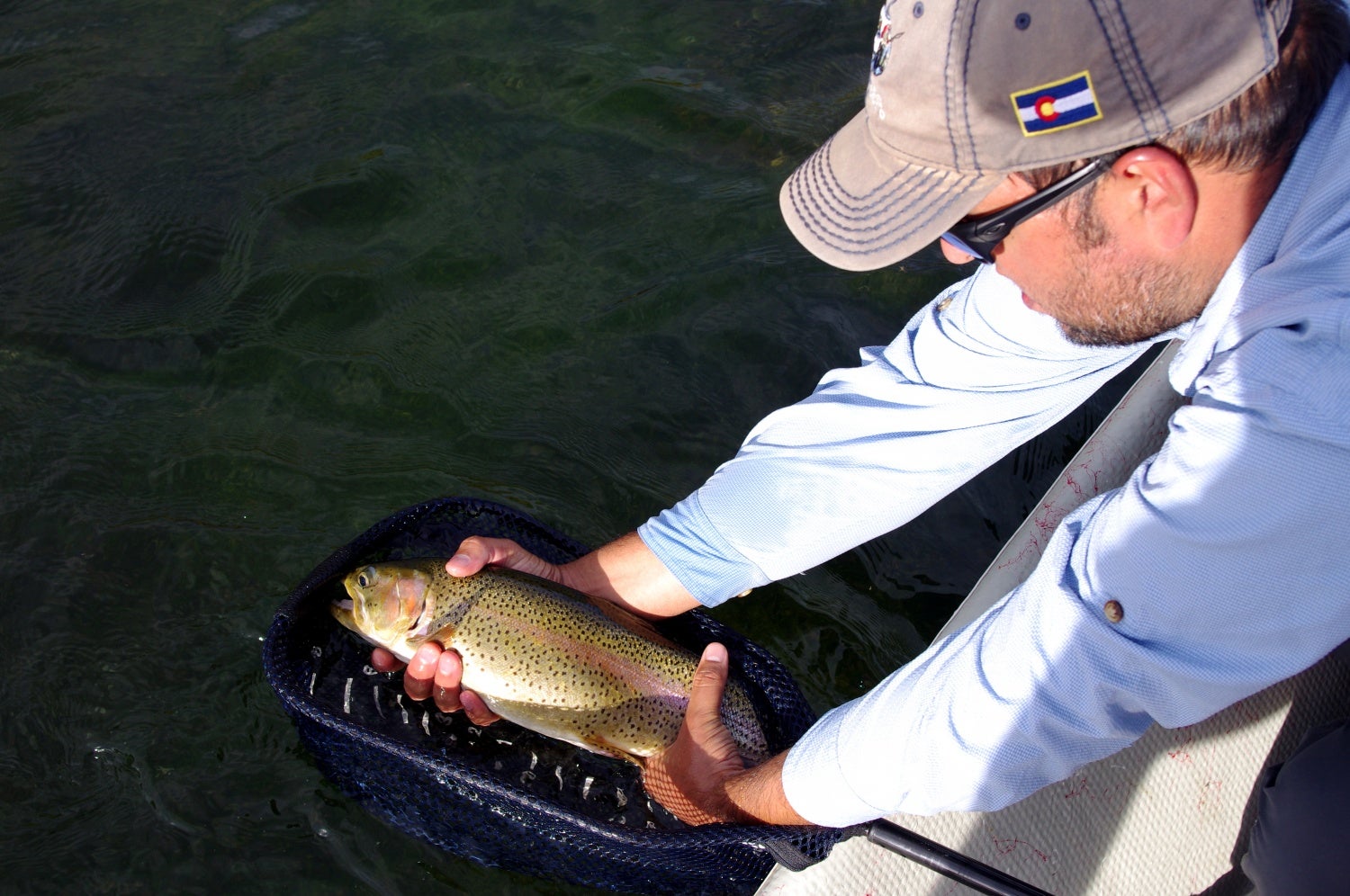
Gorgeous rainbow trout. This fish was well over 20 inches and was in excellent condition. After removing the fly from a fishes mouth we let them swim in the net for about a minute to recover and get their blood oxygen levels back to normal before being released.
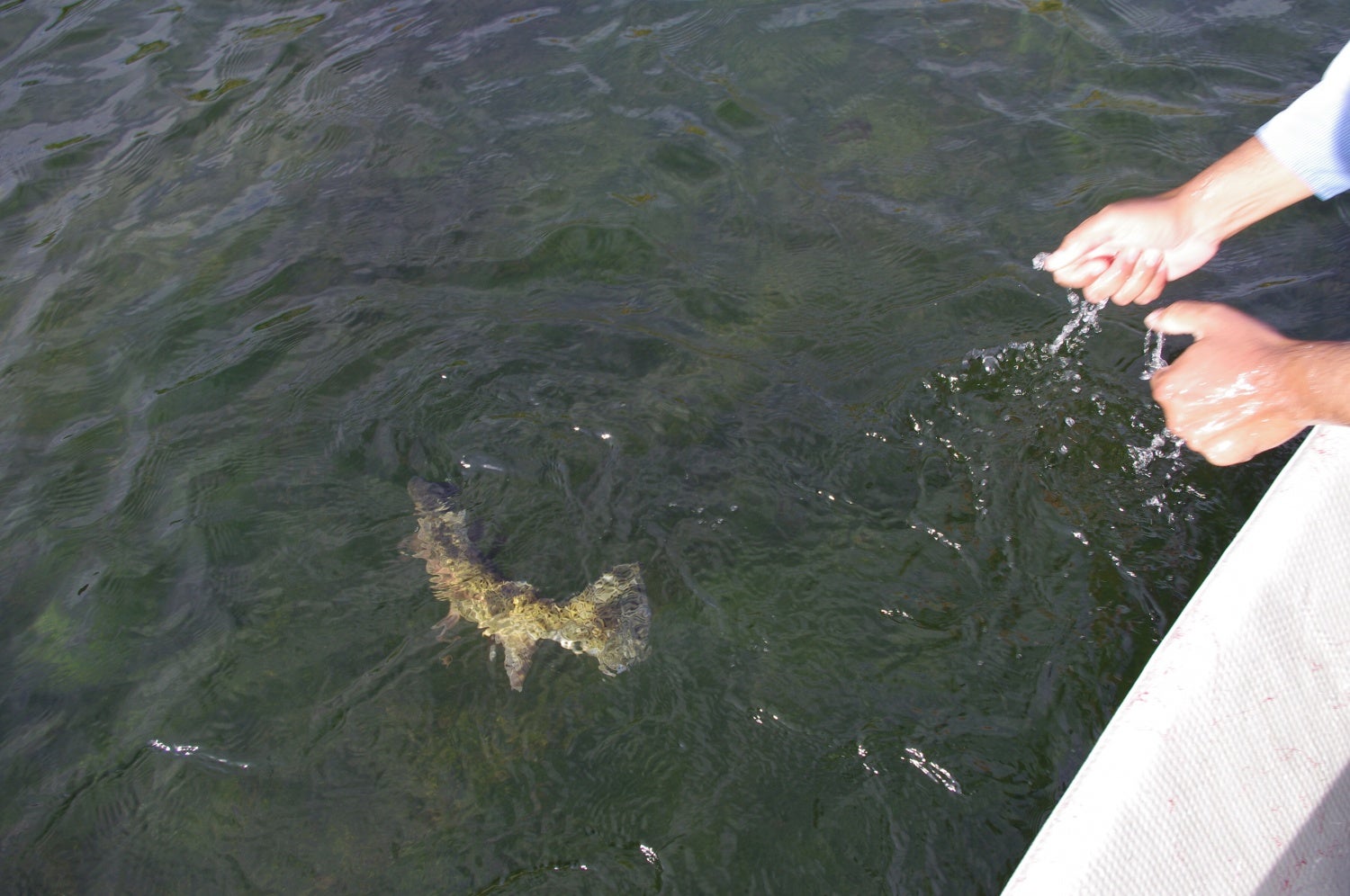
Trout descending back into the ice cold water of the San Juan. As soon as I let that fish go he went right back to where I caught him and immediately started feeding again.

These are typical flies used on the San Juan. Emergers and larvae. These flies range from size 22 to size 26.
We did not start fishing until about 10 a.m. in the morning, and did not come off the water until sunset. During the day we caught scores of rainbow, cutbow (hybrid rainbow and cutthroat trout), and brown trout. Ethan and I were very impressed with the Oakley PRIZM MARITIME SI Valve sunglasses. We both agreed that they would replace our usual fly fishing sunglasses.
Enough about fishing…this is The Firearm Blog, and I need to show my dear readers some firearms. Having established that the Oakley PRIZM MARITIME SI Valve sunglasses performed amazingly on the water, I wanted to test the glasses to see if there were any issues with parallax or reticles washing out.
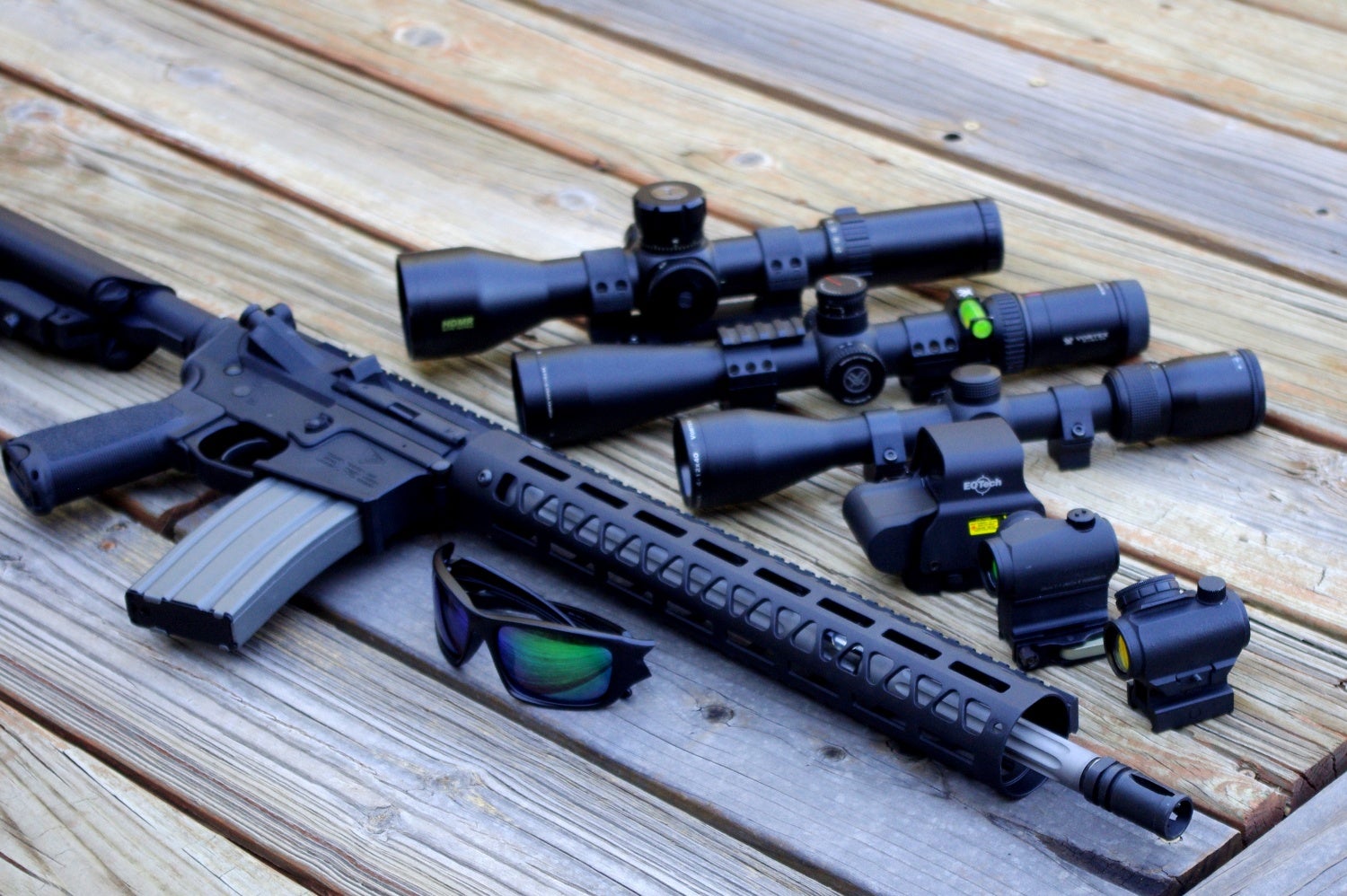
While testing the Oakley PRIZM MARITIME sunglasses, I took a lot of different scopes to the range. Bushnell TRS-25, Aimpoint T1, EoTech EXPS3, Vortex Crossfire, Vortex Viper and Bushnell HDMR.
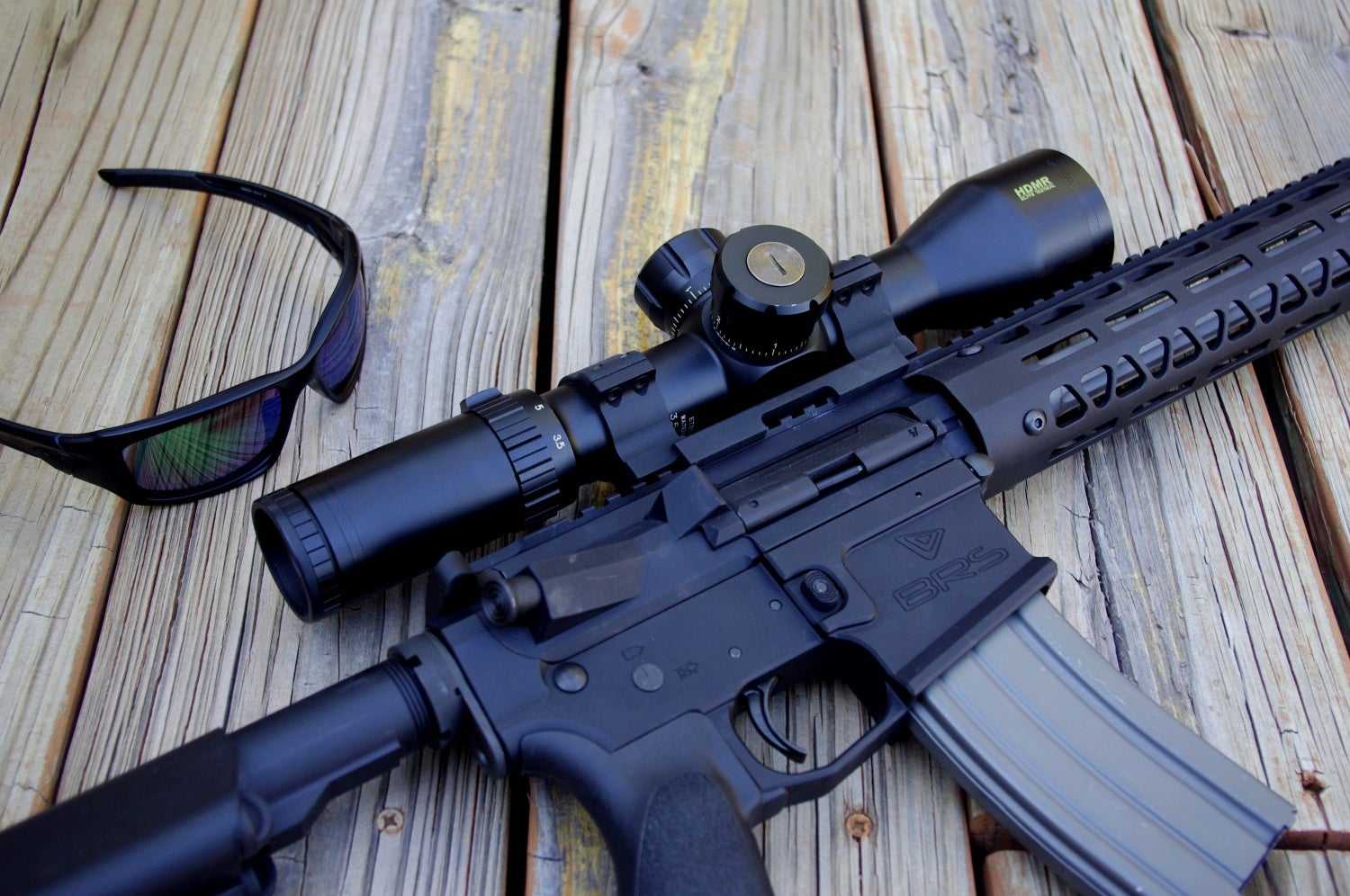
Whenever I get a new pair of sunglasses my primary concern is parallax issues. I found no issues with parallax while testing the Oakley PRIZM MARITIME sunglasses. TFB writer Nicholas C had a recent post about parallax.
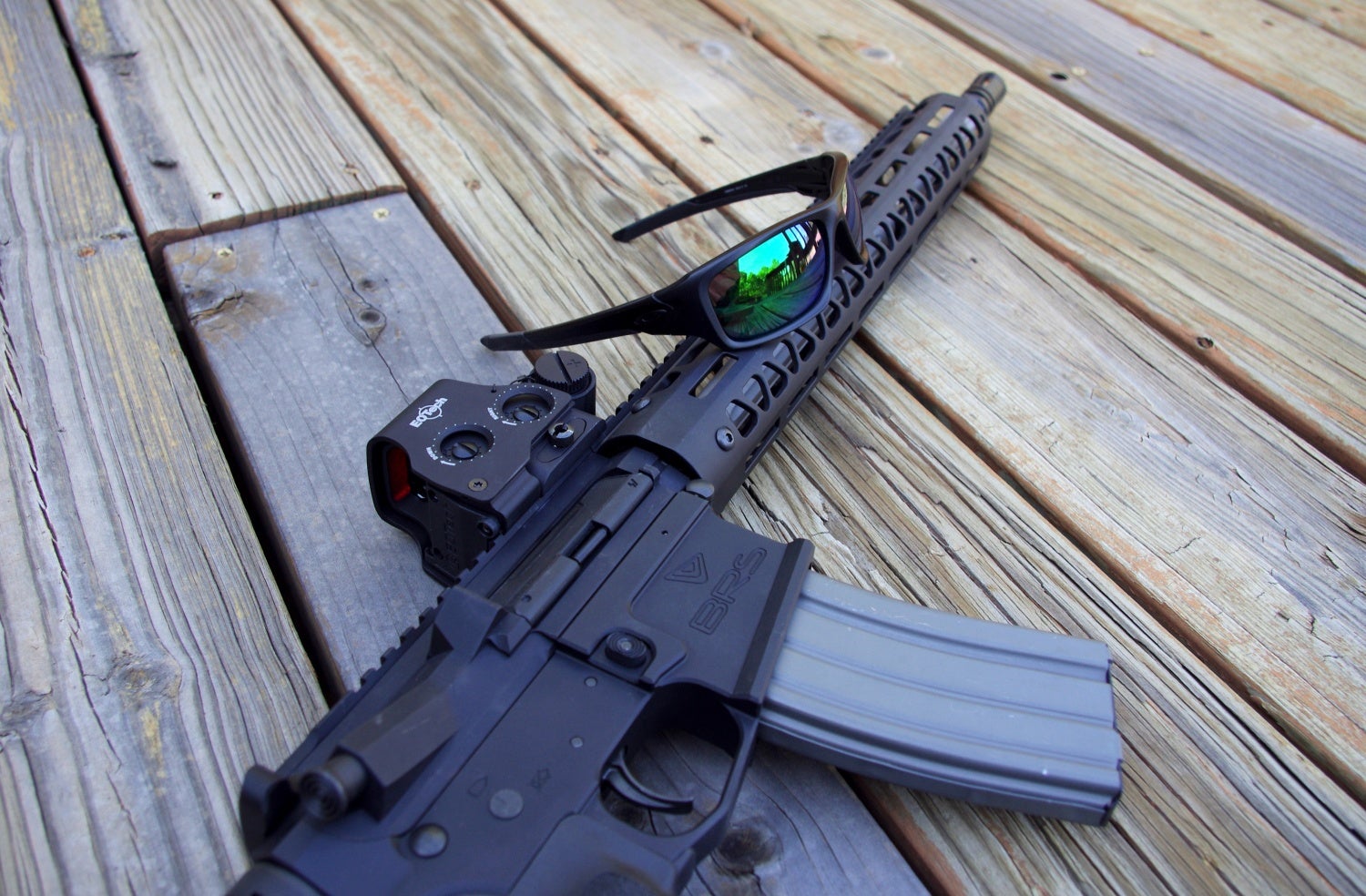
EoTech XPS3, my new testing/training Ar-15 and Oakley PRIZM MARITIME sunglasses. I have read that certain holographic reticles will wash out when viewed through a polarized lens.
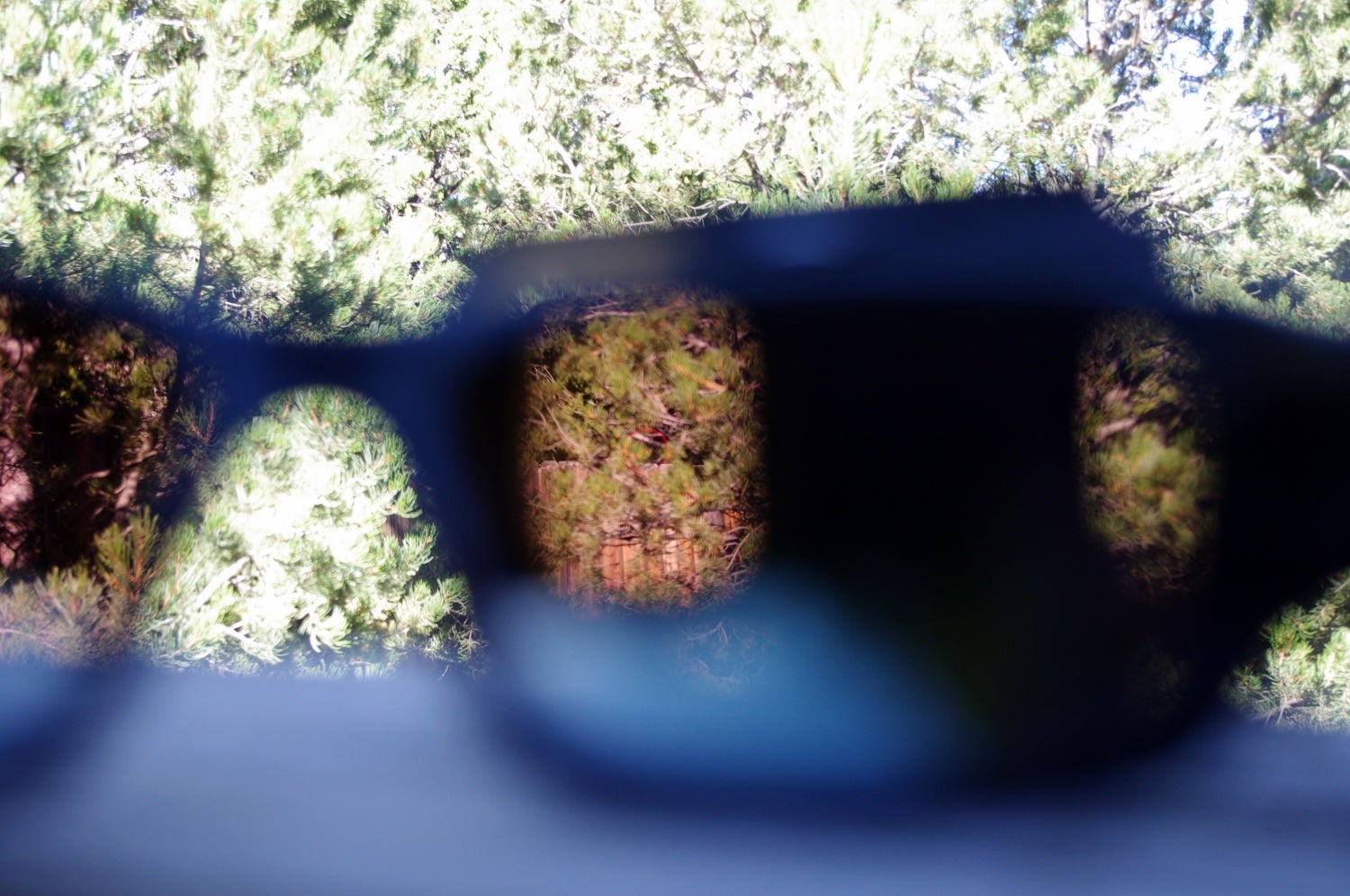
When the site was rotated the reticle washed out. Please note this will happen WITH ANY POLARIZED LENS. The reticle was turned up to its highest intensity. Shooters may encounter this issue when shooting in awkward position, under barricades, under cars or if they lay their rifle down on the hood of a car to lower their profile.

Aimpoint T1 and Oakley PRIZM MARITIME sunglasses. The Aimpoint T1 did fine, and the reticle did not wash out under any circumstances.
After several outings with the Oakley PRIZM MARITIME SI Valve sunglasses I came to the following conclusions:
- I observed no issues with parallax through my rifle scopes.
- The rubber grips on the temples and earpiece keep the glasses securely on the head when facing downward.
- The Oakley PRIZM MARITIME SI Valve sunglasses are great for shooting and fishing
- Every police officer, SRT, and SWAT team officer should have glasses like these. The lens completely removes glare off of a windshield, which enables you to identify occupants in a vehicle and, more importantly, identify what the occupants are doing.
- If you like to spot-fish for freshwater or saltwater fish these glasses would be invaluable.
- All polarized glasses slightly “wash out” the reticle on an EoTech weapon sight if the sight is orientated a certain way. The EoTech XPS3 I had for testing, reticle washed out when rotated 90 degrees. Slightly canting the rifle mitigated this problem.
After spending a fair amount of time shooting and fishing with the Oakley PRIZM MARITIME SI Valve sunglasses I am impressed by the design, polarization, and clarity of these glasses. I tend to be hard on my sunglasses, so I intend to squirrel this pair away in the safe and keep them exclusively for fly fishing. A big thank you to my awesome fishing companions, Aimpoint for providing me a red dot for testing, and especially Oakley.

Sharp eyed readers probably noticed a new Ar-15 in my pictures. I recently built a new rifle for testing and training. It has “billet” upper and lower receiver as well as a handguard from Billet Rifle Systems. It has a Colt bolt carrier group as well as a 416R stainless steel midlength barrel from Faxon Firearms, as well as a low profile gas block from Faxon Firearms. I am very excited about this rifle. I will be discussing billet receivers as well as doing a full review on the Faxon barrel in the coming months. Old faithful will get a very thorough ultra sonic cleaning and will be going in the safe. She was my primary training/testing rifle for the last two years and had thousands of rounds shot through her without a single malfunction.
 Your Privacy Choices
Your Privacy Choices
